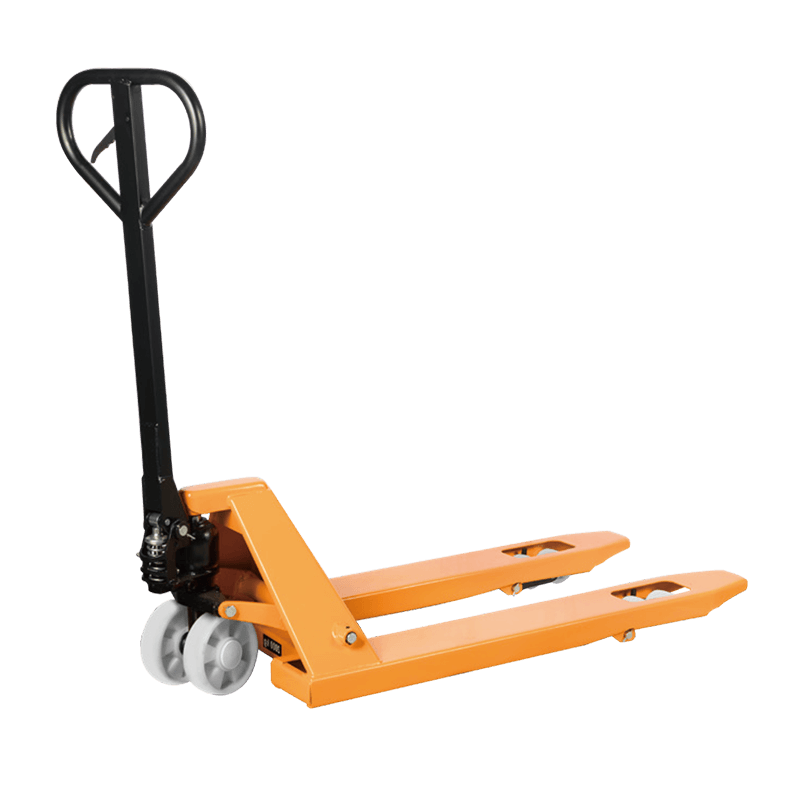Forklift hits? Let me teach you a few tricks!
Update:Jan 17,2022
Summary:When the forklift is in gear, there is a strong impact and abnormal noise occurs. In most cases, it may be due to the configuration of a hydraulic shi...
When the forklift is in gear, there is a strong impact and abnormal noise occurs. In most cases, it may be due to the configuration of a hydraulic shift fixed axle variable speed reducer or a loose differential.Rotate the input shaft of the main reducer by hand. If there is a free rotation gap, it is determined that the tooth engagement gap of the main reducer is too large.Remove the main reducer and measure its clearance distance (standard value is 0.30-0.50mm). Adjust the position of the bevel teeth so that the tooth engagement clearance between the bevel gear and the driving bevel gear is within the range of the standard clearance value. Test the machine after reassembly. For example, there is still a shock on the gear and abnormal noise when the gear is on, and the degree is only slightly less than the original, but the fault remains the same.
 At this point, the drive shaft can be removed again, leaving the transmission in an unloaded state. Start the engine, and repeat the gear shifting, shifting, and up-shifting tests. If it is found that the abnormal noise generated at the moment of shifting is still there, and the transmission has obvious vibration. Check the transmission support bolts for looseness. If the bolts are tightened, it can be judged that the fault should be inside the transmission.The transmission can be disassembled, cleaned and tested to check whether the tapered roller bearings of the main and driven shafts of the reverse gear and forward gear clutches are loose. If there is looseness, you can adjust the bearing to the appropriate clearance by adding or reducing the shim, and then re-assemble the test machine after the adjustment is complete. For example, although the phenomenon of the impact on the gear and the abnormal noise is weakened, the fault phenomenon still exists.Therefore, the search for the cause of the failure should focus on the hydraulic control part of the transmission. Because the piston return of the clutch is achieved by the preload of the spring. Therefore, at the moment of gear shifting, the main clutch may have excessive pressure control oil flow, thus quickly overcoming the spring preload, making the driving plate and the driven plate frictionally engaging too fast, which is the same as gear shock. In order to completely solve this fault, it is necessary to make certain changes to the hydraulic control pipeline. An adjustable flow valve is connected in series between the reversing valve and each clutch piston to control its flow and make it possible to achieve the purpose of smooth engagement.
At this point, the drive shaft can be removed again, leaving the transmission in an unloaded state. Start the engine, and repeat the gear shifting, shifting, and up-shifting tests. If it is found that the abnormal noise generated at the moment of shifting is still there, and the transmission has obvious vibration. Check the transmission support bolts for looseness. If the bolts are tightened, it can be judged that the fault should be inside the transmission.The transmission can be disassembled, cleaned and tested to check whether the tapered roller bearings of the main and driven shafts of the reverse gear and forward gear clutches are loose. If there is looseness, you can adjust the bearing to the appropriate clearance by adding or reducing the shim, and then re-assemble the test machine after the adjustment is complete. For example, although the phenomenon of the impact on the gear and the abnormal noise is weakened, the fault phenomenon still exists.Therefore, the search for the cause of the failure should focus on the hydraulic control part of the transmission. Because the piston return of the clutch is achieved by the preload of the spring. Therefore, at the moment of gear shifting, the main clutch may have excessive pressure control oil flow, thus quickly overcoming the spring preload, making the driving plate and the driven plate frictionally engaging too fast, which is the same as gear shock. In order to completely solve this fault, it is necessary to make certain changes to the hydraulic control pipeline. An adjustable flow valve is connected in series between the reversing valve and each clutch piston to control its flow and make it possible to achieve the purpose of smooth engagement.
